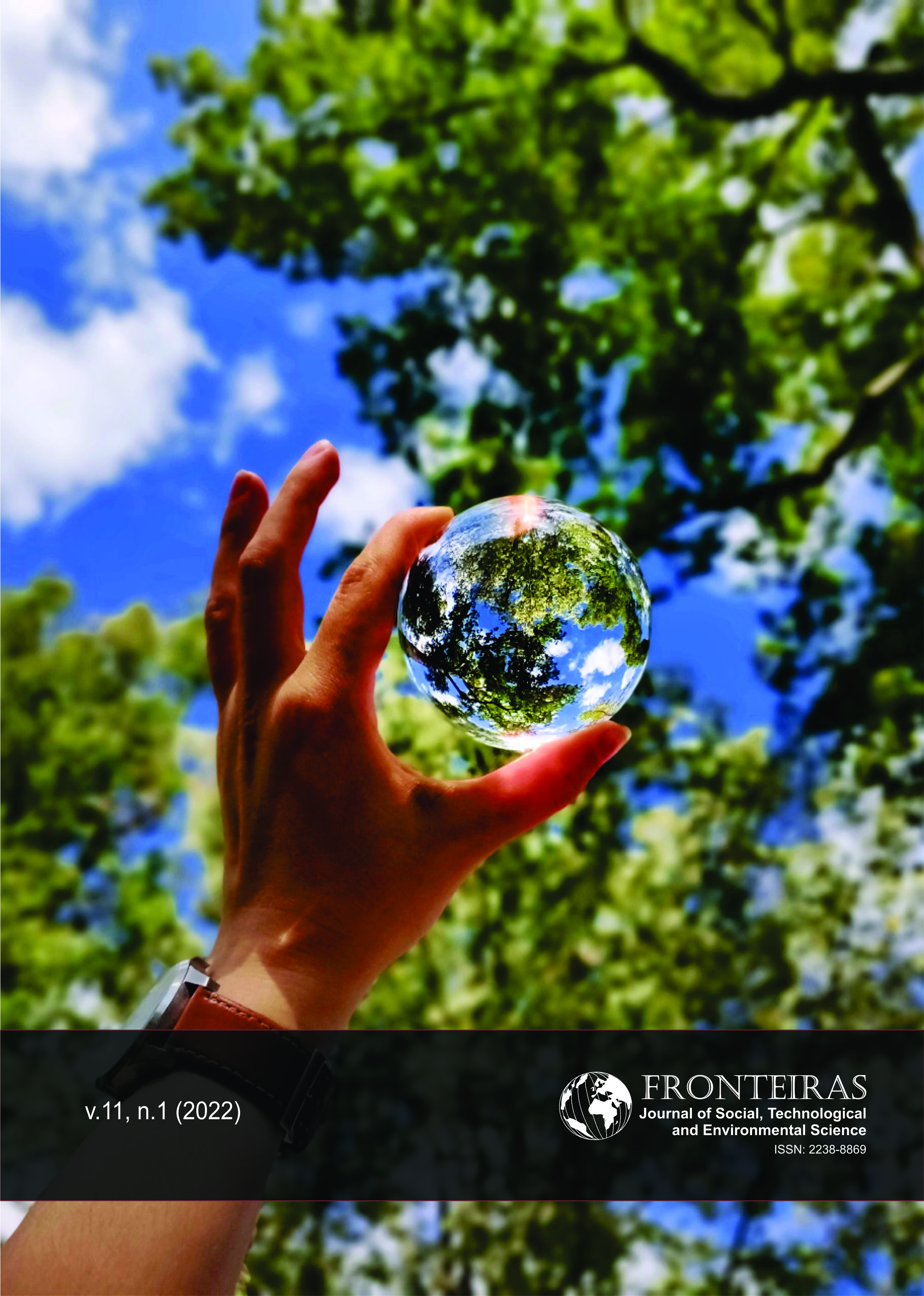Nova Metodologia para Análise do Impacto do Atropelamento de Fauna: Estudo de Caso Paraty-Cunha
DOI:
https://doi.org/10.21664/2238-8869.2022v11i1.p249-275Keywords:
ecology, fauna, impact assessmentAbstract
Highways are also associated with significant negative environmental impacts, especially deforestation and reduced wildlife. Among these negative effects, the mortality of the fauna by trampling stands out. Understanding the environmental impact caused by running over fauna is fundamental for the environmental management of highways. The purpose of this work is to propose a new methodology for assessing the environmental impact resulting from the trampling of fauna. As a case study, the proposed methodology was applied at different times during the restoration work on the Paraty-Cunha highway (RJ-165). Through the application of the methodology proposed in this thesis, it was possible to analyze, in an unprecedented way, the environmental impacts caused by the trampling of vertebrates on a highway, certainly providing more accurate and consistent results. It was evident that the environmental impacts caused by running over vertebrates on the Paraty-Cunha highway (RJ-165) proved to be relevant, as well as the existence of stretches that are more conducive to being run over by vertebrates not only quantitatively, but also qualitatively.
References
Abra F.D, Granziera B.M, Huijser M.P, de Barros, C.M. Haddad, R.M. Paolino Pay or prevent? Human safety, costs to society and legal perspectives on animal-vehicle collisions in São Paulo state, Brazil PloS One, 14 (4). 2019
Bagatini T. Evolução dos índices de atropelamento de vertebrados silvestres nas rodovias do entorno da Estação Ecológica de Águas Emendadas, DF Brasil, e eficácia de medidas mitigadoras. Brasília: (Dissertação: Mestrado em Ecologia), Universidade de Brasília, 74p. 2006.
Bager A, Fontoura V. Ecologia de Estradas no Brasil – Contexto Histórico e Perspectivas Futuras. In: BAGER, A. (editor). Ecologia de estradas: tendências e pesquisas. Lavras: Ed. UFLA. 2012.
Bergallo HG, L. Geise CR, Bonvicino R, Cerqueira PS, D’andrea CEL, Esberárd FAS, Fernandez CE, Grelle A, Peracchi S, Siciliano SM, Vaz. Mamíferos, p. 125-136. In: Bergallo HG, CFD, Rocha MAS, Alves MV, Sluys (Eds.) A fauna ameaçada de extinção do Estado do Rio de Janeiro. Rio de Janeiro, Editora da UERJ, 166p., p.125- 136. EdUERJ, Rio de Janeiro, RJ. 2000.
Bujoczek M, Ciach M, Yosef R. Road-kills affect avian population quality. Biological Conservation. v. 144, n. 3 , p. 1036-1039. 2011.
Dajoz R. Ecologia geral. Ed. Vozes, São Paulo. 1972.
Delciellos AC, Novaes RLM, Loguercio MFC, Geise L, Santori RT, Souza RF, Papi BS, Raices D, Vieira NR, Felix S, Detogne N, Silva CCS, Bergallo HG, Rocha-Barbosa O. Mammals of Serra da Bocaina National Park, state of Rio de Janeiro, southeastern Brazil. Check List, 8(4): 675-692. 2012.
Eberhardt E, Mitchell S, Fahrig L. 2013. Road Kill Hotspots Do Not Effectively Indicate Mitigation Locations When PastRoad Kill Has Depressed Populations. The Journal of Wildlife Management. v. 77, n. 7, p. 1353-1359.
Fahrig L, Rytwinski T. Effects of Roads on Animal Abundance: an Empirical Review and Synthesis. Ecology and Society, 14(1):21. 2009.
Fonseca CLF. Análise dos conflitos socioambientais na área de proteção ambiental de Cairuço (Paraty-RJ). Dissertação apresentada ao programa de pós-graduação em geografia da Universidade federal do Rio de Janeiro como requisito parcial para a obtenção do grau de mestre. Rio de Janeiro. 2013.
Forman RTT, Alexander LE. Roads and their major ecological effects. Annual Review of Ecology and Systematics. v. 29, p. 207-231. 1998.
Glista DJ, Devault TL, Dewoody JA. A review of mitigation measures for reducing wildlife mortality on roadways. Landscape and Urban Planning. v. 91, n. 1, p. 1-7. 2009.
Huijser, M.P., Abra, F.D. and Duffield, J.W., Mammal road mortality and cost-benefit analyses of mitigation measures aimed at reducing collisions with capybara (Hydrochoerus hydrochaeris) in São Paulo state, Brazil. Oecologia Australis, vol. 17, no. 1, pp. 129-146. 2013. http://dx.doi.org/10.4257/oeco.2013.1701.11.
Huijser, M.P., Duffield, J.W., Clevenger, A.P., Ament, R.J. and Mcgowen, P.T. Cost-benefit analyses of mitigation measures aimed at reducing collisions with large ungulates in the Unites States and Canada: a decision support tool. Ecology and Society, vol. 14, no. 2, pp. 15. 2009.
Huck M, Jędrzejewski W, Borowik T, Miłosz-Cielma M, Schmidt K JĘ, Drzejewska B, Nowak S, Mys Ł, Ajek RW. Habitat suitability, corridors and dispersal barriers for large carnivores in Poland. Acta Theriologica, v. 55, n. 2, p. 177–192, 2010. doi: 10.4098/j.at.0001-7051.114.2009. 2010.
IUCN. Red List of Threatened Species. Version 2010. 2010
Jackson ND, Fahrig L. Relative effects of road mortality and decreased connectivity on population genetic diversity. Biological Conservation, v. 144, p. 3143-3148. 2011.
Laurance WF, Clements GR, Sloan S, O'connell C S, Mueller ND, Goosmen M, Venter O, Edwards DP, Phalan B, Balmford A, Ven der ree R, Arrea IB. A global strategy for road building. Nature. v. 513, p. 229-232. 2014.
Lins GA, Rocha-Barbosa O, Almeida JR. Proposta de uma nova metodologia para análise do impacto ambiental do atropelamento de fauna. Revista Ibero-Americana de Ciências Ambientais. V.9. N.8. 2018.
Leopoldo BF. Composição da comunidade de mamíferos de médio e grande porte da Serra da Bocaina, RJ/SP, Brasil. Monografia de Bacharelado, Instituto de Ciências Biológicas, UFMG, 38 p. 2010
Prada CS. Atropelamento de vertebrados silvestres em uma região fragmentada do nordeste do Estado de São Paulo: quantificação do impacto e análise de fatores envolvidos. Tese Mestrado. 129 fl. Programa de Pós-Graduação em Ecologia e Recursos Naturais da Universidade Federal de São Carlos. São Paulo. 2004.
SMASP - Secretaria de Meio Ambiente do Estado de São Paulo. Lista de espécies da fauna ameaçadas de extinção do Estado de São Paulo. Base de dados eletrônicos http://www.ambiente.sp.gov.br/ listas_fauna.zip. Visto em 09 Junho 2017. 2009.
Downloads
Published
How to Cite
Issue
Section
License
This journal offers immediate free access to its content, following the principle that providing free scientific knowledge to the public, we provides greater global democratization of knowledge.
As of the publication in the journal the authors have copyright and publication rights of their articles without restrictions.
The Revista Fronteiras: Journal of Social, Technological and Environmental Science follows the legal precepts of the Creative Commons - Attribution-NonCommercial-ShareAlike 4.0 International. 


